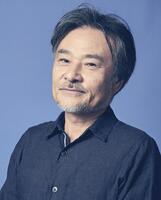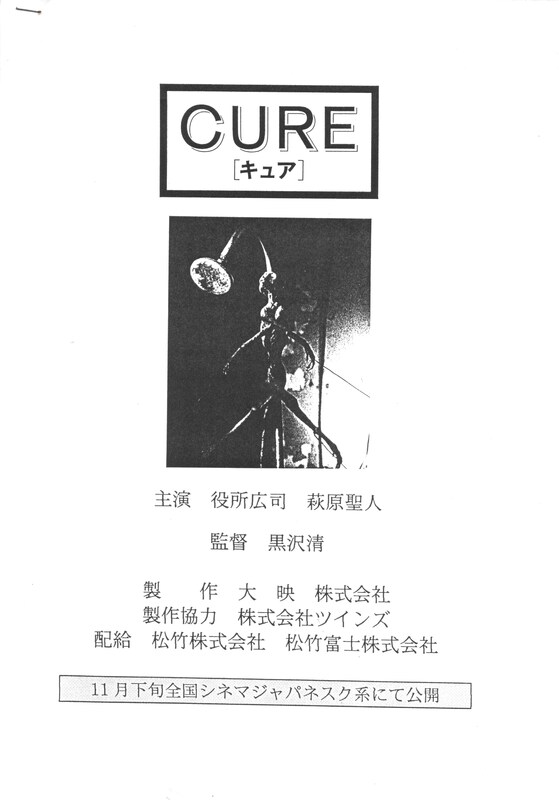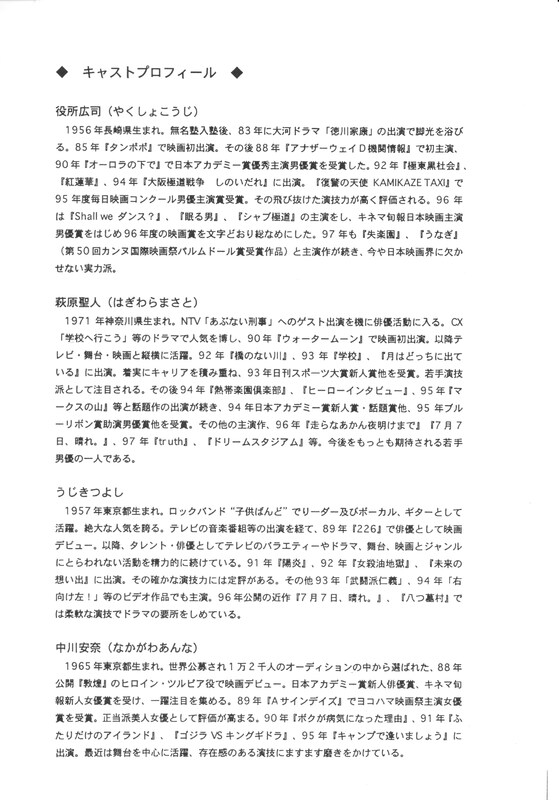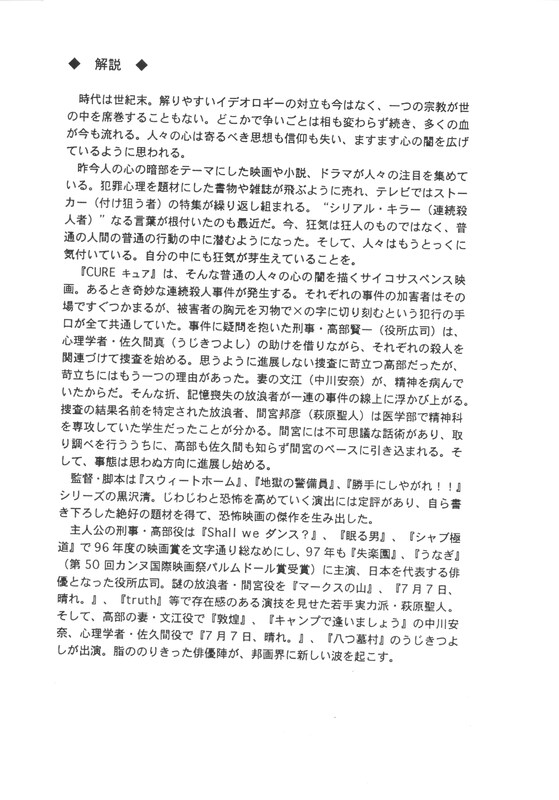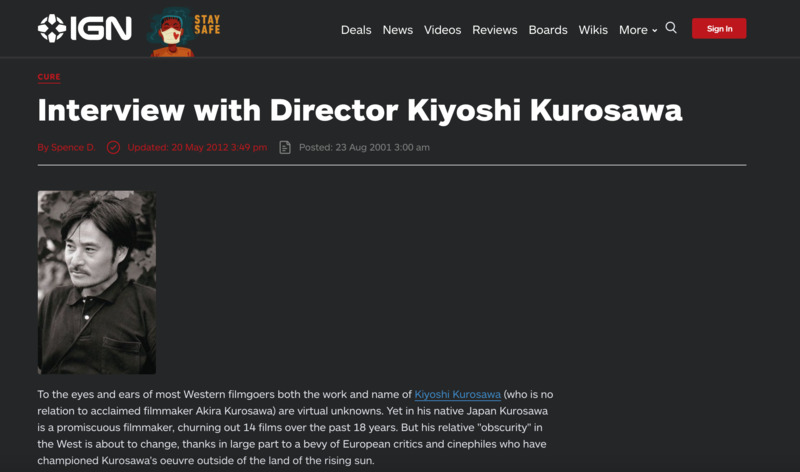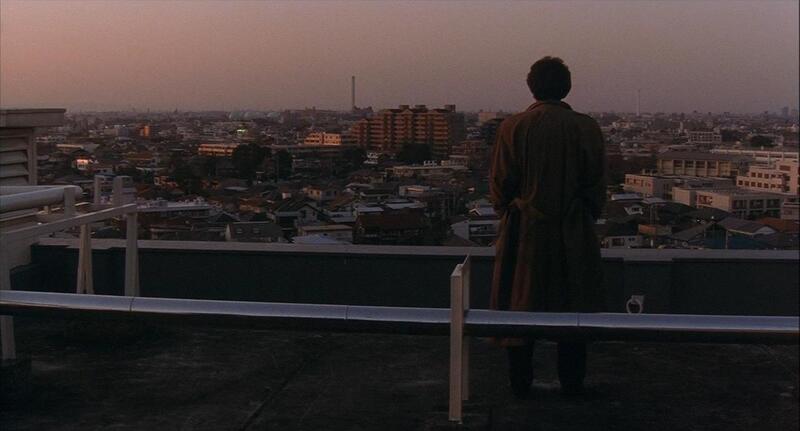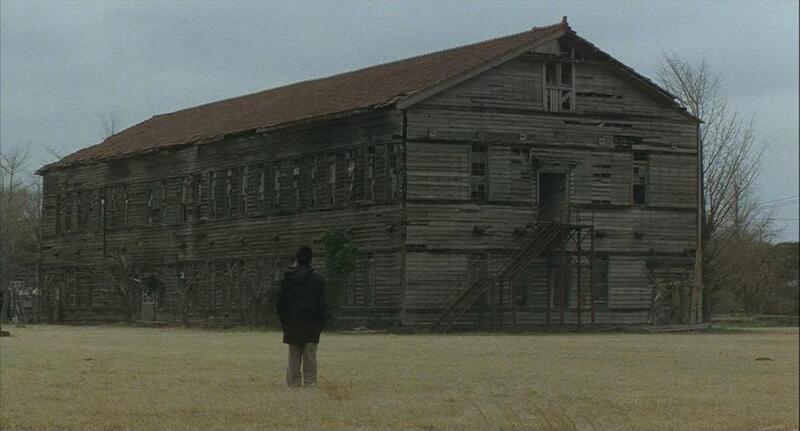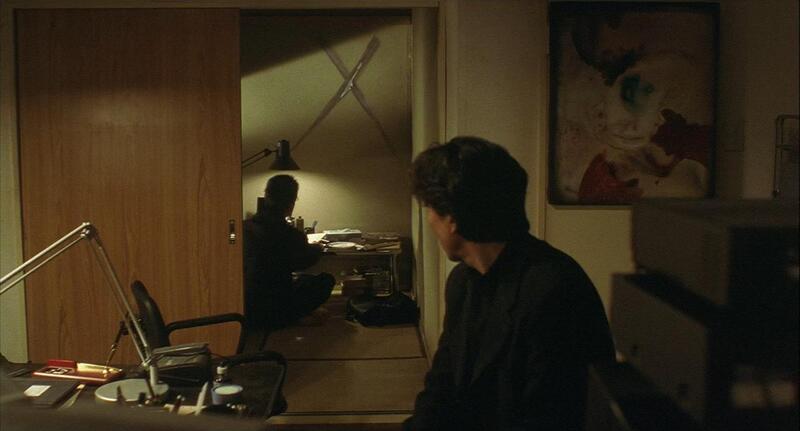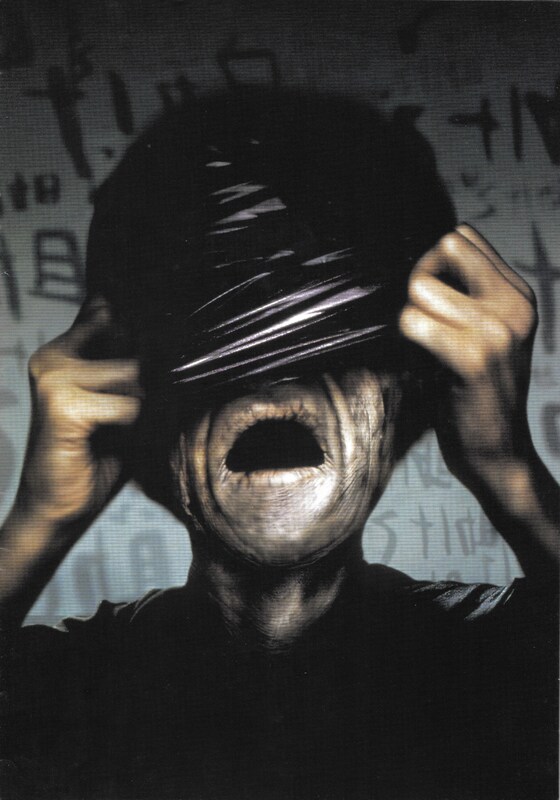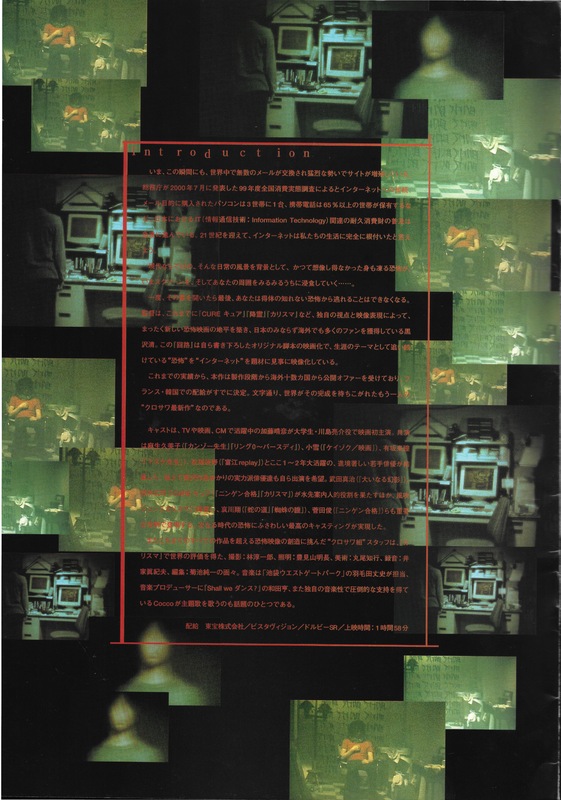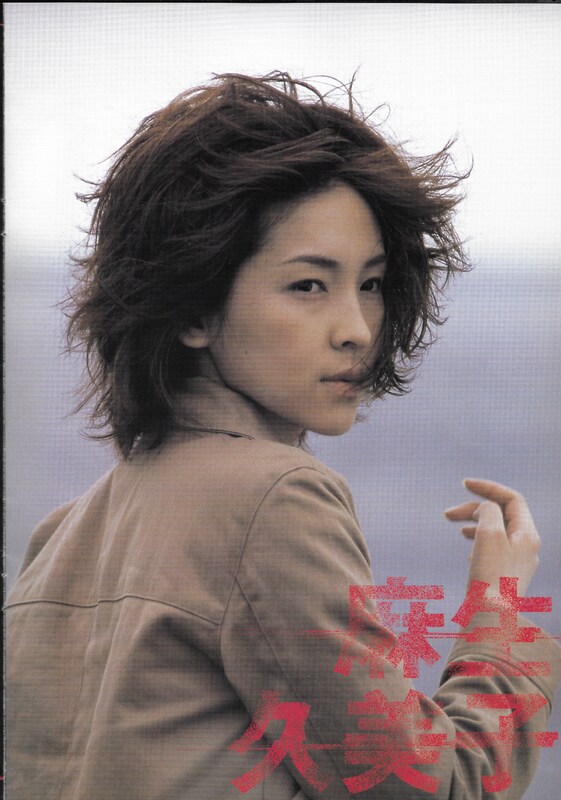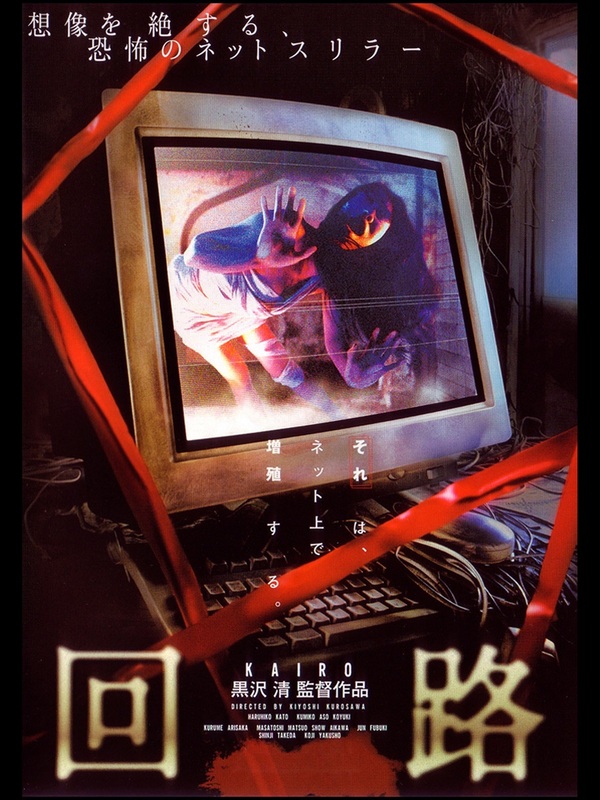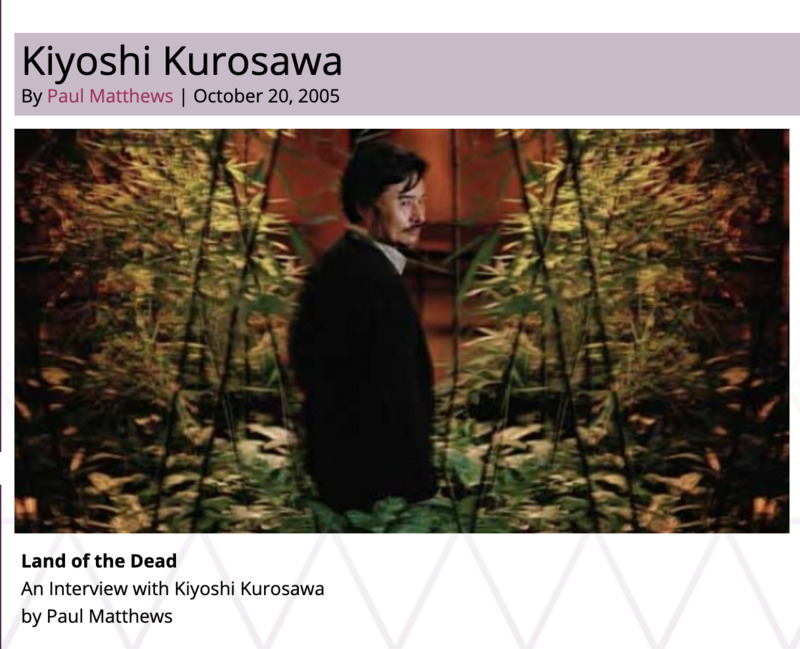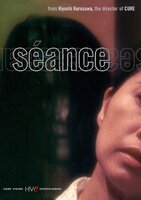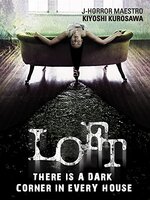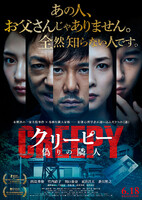Kiyoshi Kurosawa
Who is Kiyoshi Kurosawa?
Kiyoshi Kurosawa, born July 19, 1955, is a director whose works span many genres, most notably horror. At a time when film schools and programs in Japan were scarce, Kurosawa gained directing experience working on direct-to-video and pink films; in the early 1990s, he was able to study filmmaking in the United States. Kurosawa rose to fame with the crime thriller Cure, released in 1997, about a detective struggling to find the connection between murders that are seemingly unrelated. Following the success of Cure, Kurosawa directed a string of horror films, before shifting to genres such as drama and romance in 2006. He returned to horror in 2016 with Creepy (Wikipedia, 2020).
Promotional Material for Cure (1997)
These are a few pages from an 8-page informational packet scanned from the Schilling collection. The packet includes a plot summary, cast information, and presumably other production information. Its origins are unknown, though it is likely it served as a guide for critics at some point.
Click on any image to be directed to the PDF link.
Interviews with Kurosawa
In this interview presented by Eureka Entertainment and Outcast Cinema, Kurosawa looks back at what inspired him to make Cure. He also muses on his early film career, and how those experiences shaped his directing.
2001 IGN Interview with Kurosawa
Themes
In a 2001 interview with Spence D. of IGN, Kurosawa discussed his inspirations for the messages he sought to convey through Cure. Additionally, Kurosawa discussed the differences between American crime thrillers and his own.
Kurosawa explained that while American detectives tend to remain unchanged throughout the film, he prefers to have his characters be deeply affected by their environment; he "believe[s] that individuals change when something around them changes and if it's a drastic change then the character, appropriately, changes drastically, as well" (Spence D., 2001).
In shaping his characters in this way, Kurosawa emphasized the influence that society has on the trajectory of Detective Takabe's path:
In Cure the conflict between the protagonist and the society that surrounds him, what essentially happens at the conclusion is that he finds complete freedom by cutting himself off from the society. That is the main conclusion that I try to posit.
Visuals
In the same interview, Kurosawa discussed the unique optics of Cure:
To begin with the visuals, it is true that I don't use too many close-ups. It is my opinion that directors these days use way too many close-ups of human faces. It is true that close-ups of the face are extremely effective in revealing the psychology of the character, what he's feeling. But in terms of really telling the story, what's going on, I don't think it's a very useful shot at all. With live-action films, I think the real strength of the medium lies in being able to record what is truly happening before your eyes. And I think you have to take advantage of that element. That is the root, the base, the strength altogether of film itself in live-action. So I typically use the sizes of the shots that most clearly reveal what is happening before your eyes. That just happens that most of the time it becomes a long shot (Spence D., 2001).
The stills above exemplify Kurosawa's commentary. The oppenness of the shots and the obscurity of Takabe's face essentially force the viewer to gather their own feelings about a scene.
Promotional Material for Pulse (2001)
Below are some pages from a promotional booklet scanned from the Mark Schilling collection. The booklet is in Japanese, and contains story and character information. The booklet is neatly designed and effectively conveys the horror that the characters face. Click on any photo to be directed to the link to the complete PDF.
2005 Reverse Shot Interview with Kurosawa
Origins
In an interview with Paul Matthews of Reverse Shot, Kurosawa discussed the characterization of ghosts in Japan as compared to Western ghosts. The director explained that unlike Western ghosts, which tend to make grand, frightening entrances, Japanese ghosts are more reserved:
They don’t attack, they don’t kill, they don’t threaten human life; they are just there. And they show up in your daily life rather nonchalantly. They don’t make a terrifying entrance (Matthews, 2005).
Along this note, Kurosawa mentioned Kaidan ghost stories originating from kabuki, describing Pulse as "an updating of that" type of ghost story. Kurosawa elaborated on what he feels makes for a terrifying ghost story:
If [the ghosts] don’t attack you then the best you can do is figure out a way to co-
exist with them. I find the idea that one just has to live with this thing much more terrifying. You have no chances of running away or fighting it; you’re stuck with it forever.
Kurosawa contrasted this with American ghost stories, which he perceives as giving the protagonists a fighting chance to return to the pre-ghost days.
Themes
Further on in the interview, Kurosawa explained the origin of the theme of the threat of technology:
At the time I wrote this film the internet was just starting to become popularized. It was before anybody really had a full idea of what effect it was going to have on our daily lives. Through the power of marketing it just spreads all over—in the case of Japan, to just so many households, I think at the time it was just kind of this unknown force that was spreading like a virus throughout the country and had that kind of ominous and menacing feel to it (Matthews, 2005).
Other Horror Films by Kiyoshi Kurosawa
